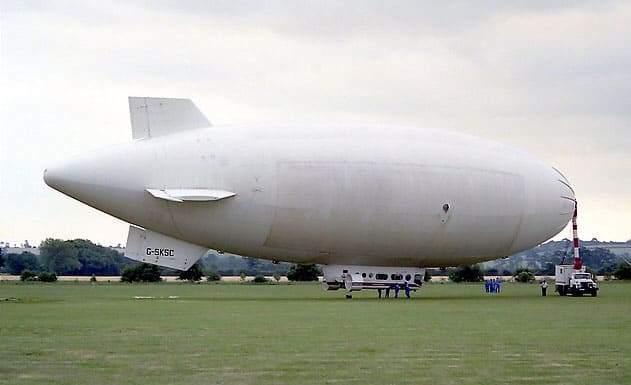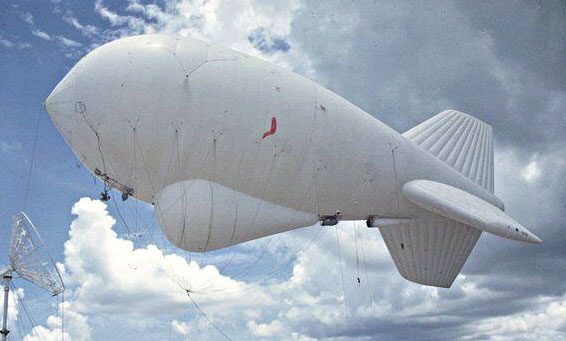
The Coast Guard and the United States Navy initiated a joint study to determine the feasibility of developing an airship to meet Navy and Coast Guard needs. Information to determine the efficiency of LTA craft was obtained from the Naval Air Development Center. (NADC) NADC did a mission analysis comparison between airships and ships, aircraft, and ship/aircraft teams needed to accomplish the same mission.
NADC used a specially written computer program to estimate the operating cost of airships. These findings were combined with known data obtained from Coast Guard mission platforms. The NADC study covered the entire spectrum of potential missions that could be performed by airships; enforcement of laws and treaties, search and rescue, marine environment protection, port safety and security, ice operations, short range aids to navigation and military operations.
In addition to operating costs, additional expenditures such as acquisition costs, capital investment in real estate and facilities, personnel, training, and maintenance were determined and taken into consideration to provide a comprehensive cost comparison. The airship came off well. The hourly cost of the 210-foot cutter was about 15 percent lower than an airship but the airship can perform a larger range of missions. The airship cost 15 percent less to operate than the HU-25 Falcon medium range search aircraft, half of what it cost to operate 378-foot cutters and the C-130 long-range search aircraft, and 70 percent less than the H-3 medium range helicopter. It found that airships could perform long-endurance missions beyond the capabilities of helicopters and some vessels. An airship could interact with surface units more directly than fixed-wing aircraft. These missions were within the abilities of the larger vessels but with an airship, could be done in half the time and use one sixth the fuel.
A contract was signed January 20th between the Navy and Airship Industries Ltd. of Great Britain for lease of an AI-500 airship for evaluation purposes. The AI-500 was the same size as the “Goodyear Blimp” with a payload capacity by weight of plus 40percent. This efficiency was achieved by the use of vectored thrust propulsion and light weight materials such as Dacron/ Mylar for the envelope and a rigid structure of glass-reinforced plastic and suspension cables of Kevlar. The nearly exclusive use of nonmetallic components produced an aircraft with a very small radar signature —-a “stealth blimp.” The envelope and components were transported to Toronto Canada for assembly. The AI-500 was assembled and then flown to Elizabeth City North Carolina for the evaluation phase of the project. The airship operated out of the nearby Weeksville blimp base. The base consisted of two blimp hangars which served as the site of an extensive U.S. Navy airship activity up until the mid 1950s.
The on-site test program was under the direction CDR James Webster USCG. During the test flight phase data was gathered in a number of areas. The airships response to wind gusts and the effectiveness of the control and propulsion systems during critical landing and retrieval conditions was documented. The quality of the ride, safety, and vibration levels were monitored. The radar performance and the airships ability to use night vision devices for effective 24-hour surveillance was evaluated. These tests were conducted by pilots and crewmembers from the Elizabeth City Air Station. The data obtained was used to verify a NASA computer simulation program.
Operational evaluation did not take place. The initial evaluation focused on the multi mission capabilities with primary reference to search and rescue. The operational evaluation most probably would have found the airship capable but unable to perform all of the missions of a ship, helicopter or fixed wing aircraft. Thus the LTA would be a supplemental procurement program. Budget considerations led to the cancellation of the LTA program. The Department of Defense continued with a LTA program. This resulted in the Aerostats. The role of the aerostat was elevated persistent surveillance. Networking several Aerostats equipped with sophisticated radar provided blanket coverage of a particular area that could be down-linked to a command and control facility. The Aerostats were used for this purpose to facilitate drug interdiction in the Caribbean and along the U.S./Mexican border.

The Coast Guard established Mobile Aerostat Platforms on board leased vessels commencing in July of 1985. Ships were civilian contracted. They were used primarily in the “choke points” and targeted surface vessels. Coast Guard personnel operated the radar computer package. The civilian master and crew operated the vessel as directed by the Coast Guard officer-in-charge. They performed well but were susceptible to weather. Strong winds could damage the Aerostat and, being tethered, a lightning bolt could severely damage the electronic package. When bad weather was encountered a decision had to be made to reposition or bring the Aerostat down. In 1987 the Coast Guard was assigned co-responsibility for air interdiction. Four E2C AWACs were operated for air surveillance purposes. Both of these operations were effective but single mission and expensive.
The airship could have provided a mobile platform able to operate in both land and marine environments. It could operate at a higher altitude than the shipboard aerostat did, providing more range. It would not have been tethered and would have been much less susceptible to weather. Equipped with the proper radar inside the envelope it could have performed both surface and air surveillance. Its non-metallic construction would have made it hard to detect on radar and its speed would have allowed it to keep up with the “go-fasts” of the time. The endurance would have provided a 24/7 surveillance in the departure zone off the coast of Colombia as well as other areas. It would have had multi-mission capabilities. The total cost including support would have been significant but in all probability nowhere near as great as the combined expenses for the Aerostats and the E2Cs.
Again in July of 2008, a test project to determine the suitability of powered airships as an economical detection platform was conducted in the Florida Straits. The airship is equipped with radar, infrared cameras and other sensors to help vessels at sea track boats smuggling illegal migrants or drugs in the waters separating the tip of Florida and Cuba; some 90 miles distant. No determination has been announced as of the end of 2010.

